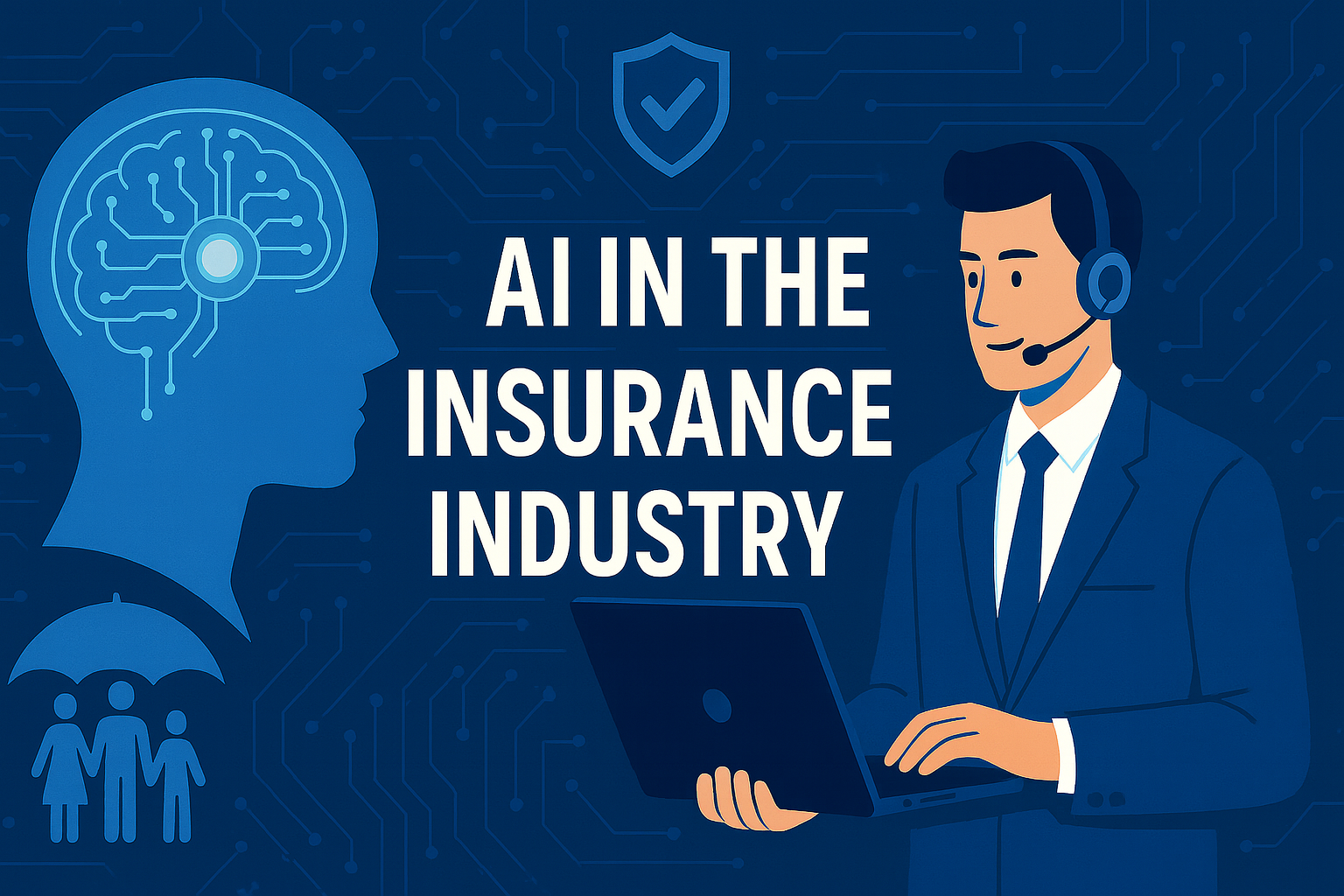Beyond pilots: AI in insurance
11 September, 2025 | Current Blog General
AI in insurance in 2025 is overhyped and underdelivering.
This article was originally published on finsurtech.ai, where I share unfiltered insights on leadership, innovation, and the future of insurance.
There. I said it. We are witnessing an AI frenzy in the insurance industry. Vendors are pitching shiny solutions, boards are eagerly asking about AI strategies, and innovation teams are running around setting up pilots.
On paper, it looks like progress. In reality, most of these initiatives deliver little to no measurable value.
“Only 1% of companies describe their GenAI rollouts as ‘mature.’” (Source: McKinsey & Company, 2025)
AI – the magic buzzword in insurance
AI is not a magic wand that fixes broken foundations.
It is a multiplier. If you layer AI on top of messy workflows, unclear goals, and poor data, you will get exactly what you built—only worse. AI will amplify the dysfunction. It will accelerate chaos. It will turn small inefficiencies into expensive problems.
That is why so many AI projects in insurance follow the same storyline: initial excitement, a few nice demos, then a quiet retreat when no real impact is delivered.
Six months later, the board asks, “Where is our AI ROI?” and the answer is a lot of awkward silence.
McKinsey estimates that generative AI and other technologies could unlock up to $4.4 trillion in annual productivity gains across industries. For insurance alone, AI could deliver up to $1.1 trillion in annual value. (Source: McKinsey & Company, 2023). However, that is possible only if we scale AI to create impact.
Overhyped and underdelivering – what if the problem is not AI?
We often fall into the trap of choosing technology first, then figuring out what to do with it.
Teams get excited about GenAI, machine learning, or automation tools, but forget to ask the most important question: What business outcome are we trying to improve? If that answer is fuzzy, the project is already doomed.
AI does not define business goals for you. It does not clean your data. It does not fix broken processes. It will not magically convince your teams to adopt it. These are foundations you need to build yourself before AI can deliver any meaningful results.
Over the years, I have seen countless projects fail because we try to solve surface-level problems with advanced technology, without addressing the underlying issues. We throw AI at processes that are full of manual workarounds, exceptions, and legacy systems, hoping it will fix everything. It does not. In fact, it often adds more complexity.
AI adoption in insurance
AI is a tool. A powerful one—but only when used correctly. And it is not just about technology. How you communicate AI within your organisation matters just as much as the technology itself.
Improving explainability
Explainability is not a technical luxury—it is a business necessity.
If your teams do not understand how AI makes decisions, they will not trust it. And if they do not trust it, they will not use it. It is that simple. Insurers need to move beyond the black-box approach and start designing AI systems that are transparent, with clear logic that human experts can audit, challenge, and refine.
Explainability does not mean exposing every line of code. It means showing how decisions are made, in language that makes sense to the people who will use them daily. It means allowing human experts to intervene, correct, and improve the model’s outputs. It means positioning AI as a partner, not a competitor.
AI in insurance core processes – people first approach
One of the biggest reasons AI adoption fails in insurance is fear. Not fear of technology failing, but fear of people being replaced. Claims handlers, underwriters, and operations teams are often told that AI will “augment” their work, but all they hear is “this machine is here to take over your job.”
That fear creates resistance. Subtle at first: people just not using the tools, ignoring recommendations, sticking to manual workarounds. But over time, this quiet resistance kills adoption.
Adoption improves when people feel empowered, not threatened. When underwriters see that AI handles repetitive data processing, they can focus on complex risks.
When claims handlers realise that AI helps them triage faster, while they bring the empathy and judgment that AI cannot replicate.
The message is not “AI will replace you.” The message is “AI will take the grunt work off your plate, so you can focus on the decisions that truly need you.”
And this shift starts with leadership. Insurers need to lead this conversation, openly and honestly. A communication and upskilling plan is not a side project—it is at the core of any AI initiative that wants to succeed. Show your teams how their roles will evolve. Involve them in designing how AI integrates into their workflows. Support them with the training and tools they need to feel in control of the change, not at the mercy of it.
That is how you build adoption. Not by pushing AI onto people, but by pulling them into the journey.
The AI Blueprint
Over the last few years, I dug deeper into the question – why most AI projects fail to deliver impact at scale?
We know the drill – most companies run in endless circles, from one proof of concept to another. It is no surprise that we speak about AI being both overhyped and underdelivering on impact.
The methodology
The AI Blueprint finsurtech.ai created is not a workshop, nor an endless assessment. It is a short, focused engagement that helps insurance teams move from AI experimentation to actual execution.
We look at what matters first: defining clear business objectives, mapping processes and user journeys, and assessing whether your organisation is even ready for AI.
Sometimes, we discover that a simple workflow automation or a process redesign can have a greater impact than any AI model could. And that is fine. The goal is not to use AI for the sake of AI. The goal is to solve problems and deliver value.
When I say assess readiness, I mean it. Data quality, decision logic, compliance needs, and explainability requirements are not boxes to be ticked—they are fundamental to success. If your data is unreliable or your processes are full of exceptions, AI will not help you. If your teams do not trust AI outputs, adoption will never happen, no matter how advanced the model is.
Even when everything aligns, you still need to choose the right technology for the job. Not everything requires GenAI or complex machine learning algorithms. Sometimes RPA is enough. Sometimes it is just a matter of automating a few manual steps. The Blueprint helps you make these decisions based on impact, not on trends.
The result
At the end of this process, you do not get a 100-page strategy deck. You get a heatmap of real opportunities, a clear readiness assessment, and a prioritised list of use cases that actually move the needle. Plus, a build-buy-partner roadmap that tells you how to execute without wasting another six months in AI limbo.
Ready to see impact?
If you are tired of AI pilots that lead nowhere, and you are ready actually to deliver business impact, I am happy to share the AI Blueprint Playbook with you. This is not a pitch. It is a practical guide to stop wasting time and start delivering results.
Drop me a line, and I will send it your way. Or simply download it here: AI Blueprint.
Mirela Dimofte
Read also: Swipe, tap, pay: Payments are the deciding factor for insurance companies




